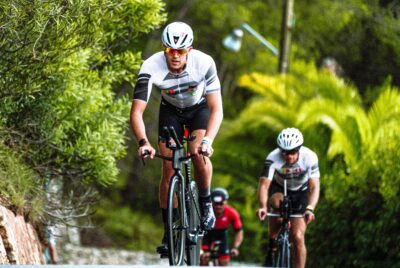Advanced Road Cycling: Tuning Bike Setup
Introduction
When it comes to advanced road cycling, the importance of bike setup cannot be overstated. A properly tuned bike can significantly enhance your performance, comfort, and overall riding experience. In this article, I will share some valuable insights and suggestions for tuning your bike setup to maximize your road cycling capabilities.
Importance of Bike Setup
Before delving into the specifics, let’s take a moment to understand why bike setup is crucial for advanced road cycling. A well-tuned bike ensures optimal power transfer, reduces the risk of injuries, and enhances your efficiency on the road. By fine-tuning various components and accessories, you can achieve a bike setup tailored to your body and riding style, resulting in a more enjoyable and rewarding cycling experience.
Finding the Right Frame Size
One of the fundamental aspects of bike setup is finding the right frame size. Riding a bike that’s too large or too small can lead to discomfort, inefficiency, and increased risk of injuries. To determine the correct frame size, consider factors such as your height, inseam measurement, and riding preferences. Consulting a professional bike fitter or utilizing online sizing calculators can provide valuable guidance in selecting the right frame size.
Adjusting Saddle Height and Position
The saddle plays a crucial role in your comfort and pedalling efficiency. A saddle set at an incorrect height can lead to discomfort, knee pain, and inefficient power transfer. Adjusting the saddle height involves finding the balance between a comfortable leg extension and maintaining proper pedalling mechanics. Experiment with different heights and seek feedback from experienced riders or bike fitters to fine-tune your saddle position.
Handlebar Positioning and Width
 Handlebar positioning and width significantly impact your riding comfort and bike handling. An ideal handlebar position allows for a relaxed and natural riding posture, reducing strain on your upper body. Additionally, choosing the appropriate handlebar width ensures optimal stability and control. Experiment with different handlebar positions and widths to find the setup that suits your body proportions and riding style.
Handlebar positioning and width significantly impact your riding comfort and bike handling. An ideal handlebar position allows for a relaxed and natural riding posture, reducing strain on your upper body. Additionally, choosing the appropriate handlebar width ensures optimal stability and control. Experiment with different handlebar positions and widths to find the setup that suits your body proportions and riding style.
Choosing the Right Gear Ratios
Optimizing your gear ratios can greatly enhance your pedalling efficiency and climbing capabilities. A gear ratio that’s too high or too low can lead to fatigue or spinning out on steep climbs. Consider the terrain you predominantly ride on and the intended riding style to determine the appropriate gear ratios for your road cycling adventures. Experiment with different gear combinations and seek advice from experienced cyclists to find the optimal setup.
Wheel Selection and Tire Pressure
The wheels you choose and the tire pressure you maintain can significantly affect your road cycling performance. Lightweight and aerodynamic wheels offer improved acceleration and maneuverability, while wider rims provide better stability and cornering grip. Additionally, maintaining the appropriate tire pressure ensures optimal rolling resistance and comfort. Choose wheels and tires based on your riding preferences and the road conditions you typically encounter.
Suspension and Damping Adjustments
While suspension setup is not as crucial for road cycling as it is for mountain biking, some advanced road bikes come with suspension features. Fine-tuning suspension settings can help optimize comfort and traction on rough roads. Additionally, adjusting damping can enhance the bike’s responsiveness and control. Consult the bike manufacturer’s guidelines or seek assistance from a professional bike shop to make precise suspension adjustments.
Brake and Shifter Lever Positioning
Proper positioning of your brake and shifter levers ensures ergonomic and efficient riding. The levers should be positioned in a way that allows easy access and comfortable reach. Adjusting lever reach and angle can help reduce hand fatigue and improve your control over the bike. Experiment with different positions and seek expert advice to find the optimal lever setup for your hands and riding style.
Fine-Tuning Accessories and Components
In addition to the main bike setup, there are several accessories and components that can be adjusted to enhance your road cycling experience. These include pedals, cleat position, stem length, and seatpost setback, among others. Each adjustment can have a subtle yet noticeable impact on your comfort and performance. Explore these options, make gradual changes, and pay attention to the feedback from your body to achieve a personalized bike setup.
Conclusion
Mastering advanced road cycling techniques goes beyond physical fitness and training. Tuning your bike setup plays a vital role in unlocking your true potential as a road cyclist. By paying attention to details such as frame size, saddle position, handlebar setup, gear ratios, and other adjustments, you can fine-tune your bike to match your body and riding style. Embrace the journey of experimentation, seek guidance from experienced riders or bike fitters, and enjoy the rewards of a perfectly tuned bike.
FAQs (Frequently Asked Questions)
1. How often should I check and adjust my bike setup?
Regularly assess your bike setup, especially when you experience discomfort or notice changes in your riding performance. Aim for at least an annual review or seek adjustments whenever you switch components or accessories.
2. Can I tune my bike setup myself, or should I consult a professional?
While basic adjustments can be done at home, seeking assistance from a professional bike fitter can provide more precise and personalized results. They have the expertise and tools to optimize your bike setup for your specific needs.
3. Is it necessary to invest in high-end components for a well-tuned bike setup?
While high-end components can offer certain advantages, achieving a well-tuned bike setup is possible with a range of components. Focus on the fundamental adjustments and invest in components that align with your riding goals and budget.
4. Can I make multiple adjustments at once, or should I take a step-by-step approach?
It’s generally recommended to make adjustments gradually and evaluate the impact of each change before moving on to the next. This allows you to identify the effects of each adjustment and find the setup that works best for you.
5. What if I still experience discomfort or issues after adjusting my bike setup?
If you continue to experience discomfort or encounter issues with your bike setup, consider seeking professional assistance. A bike fit specialist can assess your setup, address specific concerns, and provide tailored recommendations to improve your riding experience.




Comments are closed.